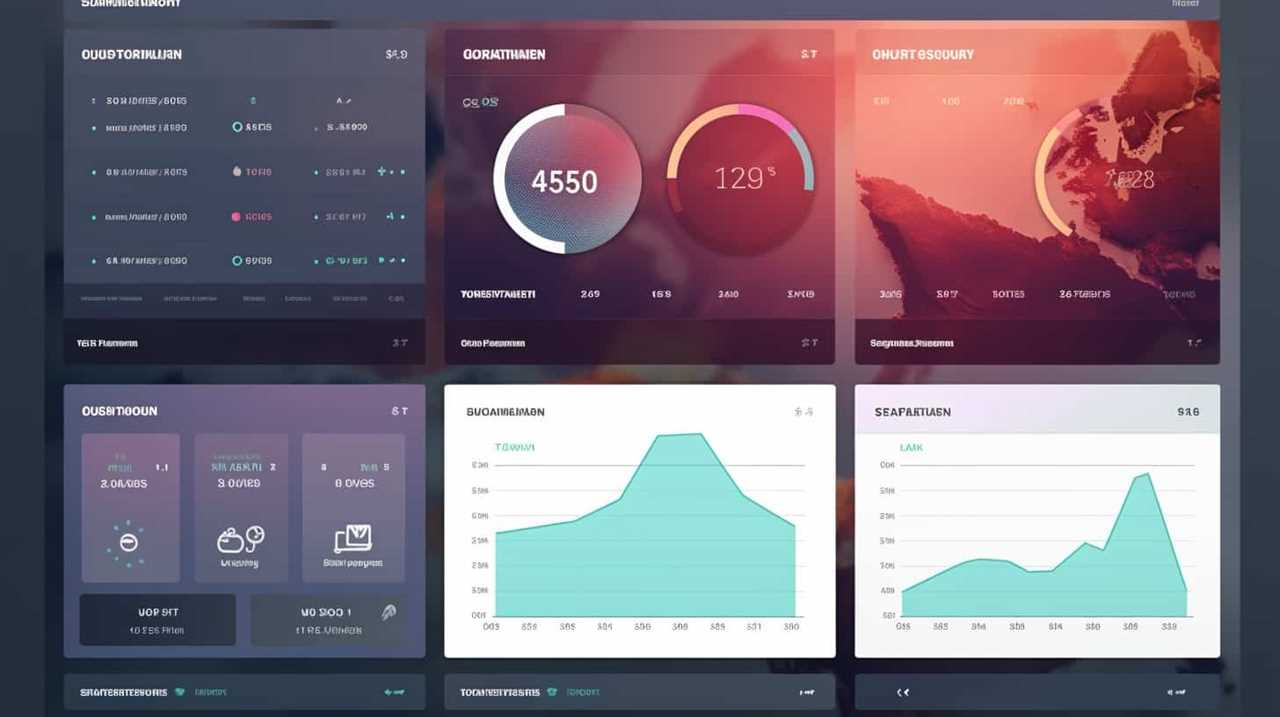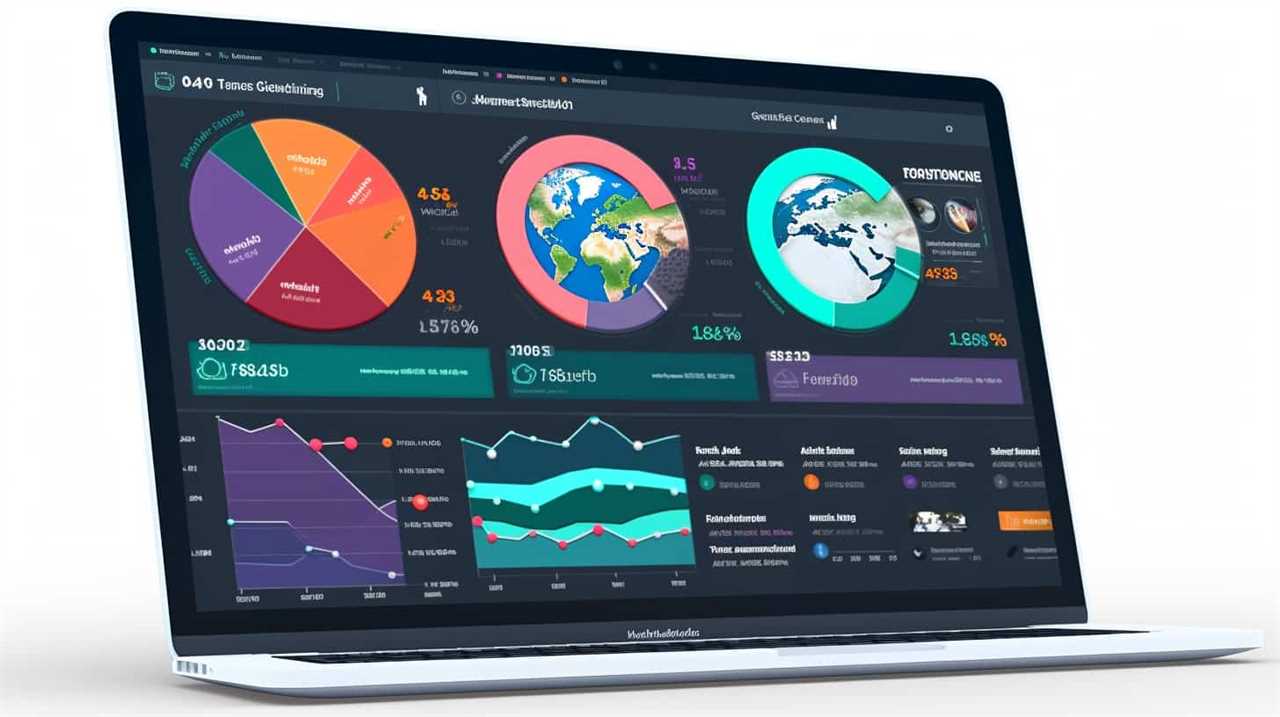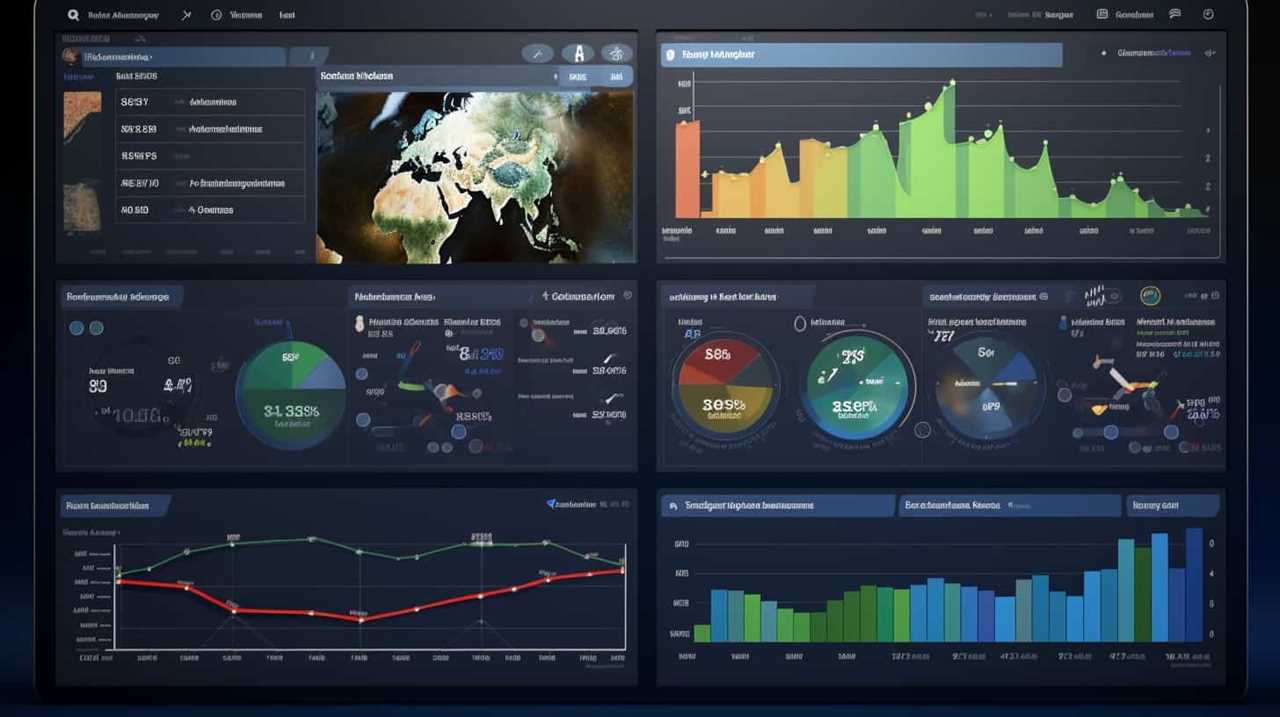Looking to enhance your website? Our post on free website audit tools is just what you’re searching for.
We’ve gathered the best tools out there to help you analyze and optimize your website for success. With Google Search Console, SEMrush Site Audit, Moz’s On-Page Grader, and more, you’ll have everything you need to fine-tune your online presence.
So buckle up and get ready to master your website’s performance like a pro.
Key Takeaways
- Website audits are important for identifying and addressing issues impacting website performance and ensuring optimal functioning and positive user experience.
- Google Search Console and SEMrush Site Audit are two tools that can be used to monitor and optimize website presence in search results, access detailed analytics, and make data-driven decisions to improve visibility and rankings.
- There are several website audit tools available, such as Moz’s On-Page Grader, Screaming Frog SEO Spider, HubSpot Website Grader, GTmetrix, Pingdom Website Speed Test, Varvy SEO Tool, and Woorank, that offer comprehensive analysis and recommendations for website optimization and performance improvement.
- In addition to SEMrush Site Audit, alternative tools like Google Search Console, Screaming Frog, GTmetrix, Pingdom, WebPageTest, Dareboost, SEMrush, Moz, and Ahrefs can also be used for website analysis and performance evaluation.
Importance of Website Audits
Website audits are important because they allow us to identify and address any issues that may be impacting the performance and effectiveness of our website. By conducting regular audits, we can ensure that our website is functioning optimally and providing a positive user experience.

A website audit helps us in improving website rankings by identifying areas where our site may be lacking in terms of search engine optimization (SEO). It enables us to analyze key elements such as website speed, mobile responsiveness, and overall website structure.
Additionally, a website audit helps us in optimizing website content by identifying any duplicate or thin content, as well as highlighting opportunities for keyword optimization. By addressing these issues, we can enhance our website’s visibility, user engagement, and ultimately drive more organic traffic.
Google Search Console
To further analyze and improve our website’s performance, we can utilize the Google Search Console. This powerful tool allows us to monitor and optimize our website’s presence in Google search results. With Google Search Console, we can track our website’s performance, identify any issues that may be impacting our Google search ranking, and make data-driven decisions to improve our website’s visibility.
One of the key features of Google Search Console is its ability to provide detailed website analytics. We can access valuable information such as the keywords that are driving traffic to our site, the number of impressions and clicks our website receives, and the average position of our website in search results. Armed with this data, we can identify areas of improvement and take necessary actions to enhance our website’s performance.

By regularly utilizing Google Search Console, we can stay on top of our website’s performance and make informed decisions to increase our Google search ranking. It’s a must-have tool for every website owner who desires mastery in website analytics.
| Key Features | Benefits | Why It Matters |
|---|---|---|
| Detailed website analytics | Gain insights into your website’s performance | Make data-driven decisions |
| Keyword analysis | Identify top-performing keywords and optimize your content | Rank higher in relevant search results |
| Monitoring and alerts | Receive notifications about website issues and take immediate action | Ensure your website is always running smoothly |
Using Google Search Console gives us the ability to optimize our website for better search rankings and improve our overall online presence. It’s an essential tool in our arsenal for website analytics, providing us with valuable insights and helping us make informed decisions to enhance our website’s performance.
SEMrush Site Audit
Now let’s talk about SEMrush Site Audit and its features and benefits.
With SEMrush, you can analyze your website’s overall health, identify issues that may be affecting its performance, and get actionable recommendations for improvement.

It’s a powerful tool that can help you optimize your website and boost its rankings in search engines.
Looking for free alternatives? We’ve got you covered too!
SEMrush Features and Benefits
After conducting research on free website audit tools, we discovered that SEMrush offers a range of impressive features and benefits, particularly in its Site Audit tool.
SEMrush is known for its comprehensive competitor analysis capabilities and its ability to provide valuable insights into your website’s performance. With SEMrush, you can easily identify and fix any technical issues that may be impacting your website’s ranking on search engines.

The Site Audit tool allows you to analyze your website’s health, identify broken links, and optimize your website’s structure for better search engine visibility.
Furthermore, SEMrush offers flexible pricing options to cater to the needs of different businesses.
Best Free Alternatives
In the realm of free website audit tools, one of the best alternatives to SEMrush’s Site Audit is worth exploring. When it comes to website analysis and performance optimization, these alternatives offer similar features and benefits:
- Google Search Console: Provides valuable insights into your website’s performance on search engines and identifies any technical issues that may affect your rankings.
- Screaming Frog: Conducts a comprehensive website crawl, analyzing elements like broken links, duplicate content, and page titles.
- GTmetrix: Evaluates your website’s speed and performance, providing detailed reports and recommendations for improvement.
- Pingdom: Monitors your website’s uptime and load times, alerting you to any issues that may impact user experience.
- WebPageTest: Tests your website’s speed and performance from different locations, allowing you to identify areas for improvement.
These alternatives offer a range of features to help optimize your website’s performance and address any issues that may impact its success.

Improving Website Performance
To improve website performance using SEMrush Site Audit, we utilize its comprehensive analysis and optimization features. One of the key areas to focus on for website optimization is page load speed. A slow-loading website can lead to a higher bounce rate and lower search engine rankings. SEMrush Site Audit provides valuable insights into the factors affecting page load speed and offers recommendations for improvement. By analyzing factors such as server response time, image optimization, and code minification, you can identify and address any issues that are slowing down your website. By implementing these optimizations, you can enhance user experience, increase website traffic, and improve your overall search engine visibility.
| Factor | Recommendation |
|---|---|
| Server Response Time | Optimize server configuration for faster response |
| Image Optimization | Compress and resize images for faster loading |
| Code Minification | Minify HTML, CSS, and JavaScript files |
Moz’s On-Page Grader
We highly recommend using Moz’s On-Page Grader for a comprehensive analysis of your website’s performance. This powerful tool allows you to evaluate various aspects of your web pages, providing insights that can help you optimize your site for better search engine rankings and user experience.
Here are five key reasons why Moz’s On-Page Grader is essential for website audits:
- Keyword Optimization: The tool analyzes your page content and provides suggestions to optimize your keyword usage.
- Title and Meta Tag Analysis: It evaluates the effectiveness of your page titles and meta tags, helping you improve click-through rates.
- URL Structure: On-Page Grader assesses your URL structure for readability and best practices.
- Page Speed: It checks your page load speed, identifying areas for improvement to enhance user experience.
- Mobile-Friendliness: The tool assesses your website’s responsiveness and mobile-friendliness to ensure it looks great on any device.
With Moz’s On-Page Grader, you can uncover valuable insights and make data-driven decisions to optimize your website’s performance.

Screaming Frog SEO Spider
When it comes to website audits, the Screaming Frog SEO Spider has some key features and benefits that make it a standout tool.
Firstly, its user-friendly interface allows users to easily navigate and analyze their website’s SEO performance.
Additionally, when compared to other tools, the Screaming Frog SEO Spider provides comprehensive insights and actionable recommendations for improving website optimization.
Key Features and Benefits
One of the main advantages of using the Screaming Frog SEO Spider tool is its ability to quickly and comprehensively analyze a website’s SEO performance. This tool offers several key features and benefits that can greatly assist in improving website design and conducting website traffic analysis:

- Crawl and Indexing: The SEO Spider crawls your website, identifying all pages and their respective SEO elements, such as title tags, meta descriptions, and headers.
- On-Page Analysis: It analyzes the on-page SEO factors, providing insights on keyword usage, duplicate content, and broken links.
- XML Sitemap Generation: The tool automatically generates XML sitemaps, ensuring that search engines can easily discover and index your website’s pages.
- Integration with Google Analytics: It seamlessly integrates with Google Analytics, allowing you to gather valuable data on website traffic and user behavior.
- Custom Extraction: The SEO Spider allows you to extract specific data from your website, such as URLs, meta data, or headers, for further analysis.
User-Friendly Interface
With its user-friendly interface, the Screaming Frog SEO Spider tool simplifies website auditing and analysis. This tool allows users to easily navigate through various features and options, making it accessible for both beginners and experts in the field of SEO.
The user-friendly interface of the Screaming Frog SEO Spider tool enhances user engagement by providing a seamless experience while conducting website audits. It allows users to quickly identify usability issues, broken links, duplicate content, and other factors that may impact website design and user experience.
By streamlining the auditing process, this tool enables users to make informed decisions and optimize their websites for better performance.
Now, let’s compare the Screaming Frog SEO Spider tool with other website audit tools to determine its advantages and disadvantages.

Comparison With Other Tools
We found that the Screaming Frog SEO Spider tool outperforms other free website audit tools in terms of its comprehensive analysis and user-friendly interface. Here are some reasons why Screaming Frog SEO Spider is a top choice for improving SEO and website optimization:
- The tool provides in-depth analysis of website elements such as meta tags, headings, and URLs, allowing for precise optimization.
- It offers advanced features like XML sitemap generation and website crawl visualization, making it easier to identify and fix issues.
- The tool’s intuitive interface and customizable reports make it accessible for users with varying levels of technical expertise.
- It allows for easy integration with other SEO tools and platforms, streamlining the optimization process.
- The tool’s frequent updates and responsive customer support ensure that users have access to the latest features and assistance.
Now, let’s move on to the next section, where we’ll discuss the HubSpot Website Grader.
HubSpot Website Grader
To assess the performance of our website, we utilized the HubSpot Website Grader, an efficient and user-friendly tool.
HubSpot Website Grader is one of the most popular free website audit tools available. It provides a comprehensive analysis of a website’s performance, including SEO, mobile responsiveness, security, and performance.

The tool generates a detailed report that highlights areas of improvement and provides actionable recommendations to optimize the website.
With its intuitive interface and easy-to-understand metrics, HubSpot Website Grader is suitable for both beginners and experienced webmasters. It allows users to track their website’s progress over time and ensure that it meets industry standards.
GTmetrix
After using the HubSpot Website Grader, we turned to GTmetrix to further evaluate our website’s performance. GTmetrix is a powerful tool that provides detailed insights into website speed and performance. Here are some key features and benefits of using GTmetrix:
- GTmetrix offers a comprehensive analysis of your website’s loading speed, including a breakdown of page load time, file sizes, and the number of requests made.
- It provides recommendations for improving website performance, such as optimizing images, leveraging browser caching, and minimizing CSS and JavaScript files.
- GTmetrix allows you to compare your website’s performance against industry benchmarks, helping you identify areas for improvement.
- It offers integration with popular content delivery networks (CDNs) to further enhance your website’s speed and performance.
- If you’re looking for GTmetrix alternatives, other tools you can consider include Pingdom, WebPageTest, and Dareboost.
Now that we’ve explored GTmetrix, let’s move on to the next tool in our arsenal: the Pingdom Website Speed Test.

Pingdom Website Speed Test
Moving on to the Pingdom Website Speed Test, we frequently utilize this tool to assess our website’s performance. This tool helps us measure our website load time and identify areas for website optimization.
With Pingdom, we can analyze the performance of our website from different locations around the world, giving us a comprehensive understanding of how our website performs for users across different regions. The tool provides detailed information on load times for individual elements on our website, such as images, scripts, and CSS files.
Varvy SEO Tool
When it comes to analyzing a website’s performance and improving its SEO, Varvy SEO Tool is a valuable resource.
Varvy provides a comprehensive website analysis, covering areas such as page speed, mobile-friendliness, security, and more.

Additionally, Varvy offers detailed suggestions for SEO improvements, helping website owners optimize their online presence for better search engine rankings.
Varvy’s Website Analysis
Varvy’s Website Analysis is a comprehensive tool that provides a detailed assessment of a website’s SEO performance. Compared to other tools, Varvy stands out with its user-friendly interface, making it easy for beginners and experts alike to navigate and understand.
Here are five key features of Varvy’s Website Analysis:
- Detailed SEO Report: Varvy generates a comprehensive report that highlights both the strengths and weaknesses of your website’s SEO.
- Page Speed Analysis: Varvy evaluates the loading speed of your web pages and provides suggestions on how to improve it for better user experience.
- Mobile Friendliness Check: Varvy ensures that your website is optimized for mobile devices, helping you reach a wider audience.
- Accessibility Assessment: Varvy examines your website’s accessibility, making sure it’s inclusive and usable for all visitors.
- Social Media Integration: Varvy analyzes your website’s social media presence and provides insights on how to enhance your social media strategy.
With Varvy’s Website Analysis, you can gain valuable insights and actionable recommendations to improve your website’s SEO performance.

Now, let’s explore some SEO improvement suggestions.
SEO Improvement Suggestions
As we continue our discussion on Varvy’s Website Analysis, let’s now explore some SEO improvement suggestions provided by this powerful tool.
Varvy’s SEO tool offers valuable insights and recommendations to enhance your website’s visibility and increase its rankings on search engine results pages (SERPs).
One of the key suggestions is to improve your keyword research techniques. Varvy’s tool analyzes your website’s content and provides recommendations for optimizing your use of keywords. It suggests using relevant and high-ranking keywords in your titles, headings, meta descriptions, and content. By incorporating these keywords strategically, you can improve your website’s visibility and attract more organic traffic.

Additionally, Varvy’s SEO tool provides suggestions to optimize your website’s structure, speed, and mobile-friendliness, further enhancing its performance in search engine rankings.
Woorank
How effectively can we use Woorank as a free website audit tool?
Woorank is a powerful tool that provides a comprehensive analysis of your website’s performance and SEO. Here are some key ways to leverage Woorank effectively:
- Identify areas for improvement: Woorank analyzes various aspects of your website, such as SEO, usability, and mobile optimization, and provides actionable suggestions to enhance your website’s performance.
- Compare with competitors: Woorank allows you to compare your website’s performance with your competitors, helping you identify areas where you can outperform them.
- Track progress over time: Woorank provides historical data, allowing you to track the progress of your website’s performance and SEO efforts.
- Woorank alternatives: While Woorank is a great tool, it’s always good to explore other options like SEMrush, Moz, and Ahrefs.
- Woorank pricing: Woorank offers a free version with limited features, as well as subscription plans starting at $59 per month for more advanced features and reports.
With Woorank, you can gain valuable insights and improve your website’s performance to achieve higher rankings and better user experience.

Frequently Asked Questions
Can I Use Multiple Website Audit Tools Simultaneously to Get a Comprehensive Analysis of My Website?
Yes, we can use multiple website audit tools simultaneously to get a comprehensive analysis of our website. It allows us to compare results, identify areas of improvement, and implement best practices for website audits.
How Often Should I Perform a Website Audit to Ensure My Website Is Optimized?
We perform website audits regularly to ensure optimal website performance. The frequency of these audits depends on factors such as website complexity and industry trends. It’s crucial to prioritize website optimization for maximum impact.
Are Website Audits Only Beneficial for SEO Purposes, or Do They Also Help With Other Aspects of Website Performance?
Website audits provide numerous benefits beyond just improving SEO. They help identify and fix technical issues, enhance user experience, boost website speed, and optimize conversions. Overall, website audits are essential for improving website performance.
Can Website Audit Tools Detect and Fix Accessibility Issues on My Website?
Yes, website audit tools can detect and fix accessibility issues on our website. They help optimize our site for mobile and improve user experience. It’s essential to use these tools for a seamless online presence.

Are There Any Limitations or Restrictions When Using Free Website Audit Tools Compared to Paid Ones?
When using free website audit tools, there may be limitations compared to paid ones. However, there are still benefits to using them, such as identifying common issues and gaining insights into your website’s performance.
Conclusion
After using these free website audit tools, you’ll uncover the hidden secrets of your website’s performance.
With Google Search Console, SEMrush Site Audit, Moz’s On-Page Grader, Screaming Frog SEO Spider, GTmetrix, Pingdom Website Speed Test, Varvy SEO Tool, and Woorank, you’ll have a comprehensive understanding of your site’s strengths and weaknesses.
Get ready to transform your website into a well-oiled machine, attracting more visitors and boosting your online presence.

Don’t wait, take action now and unlock the full potential of your website.










